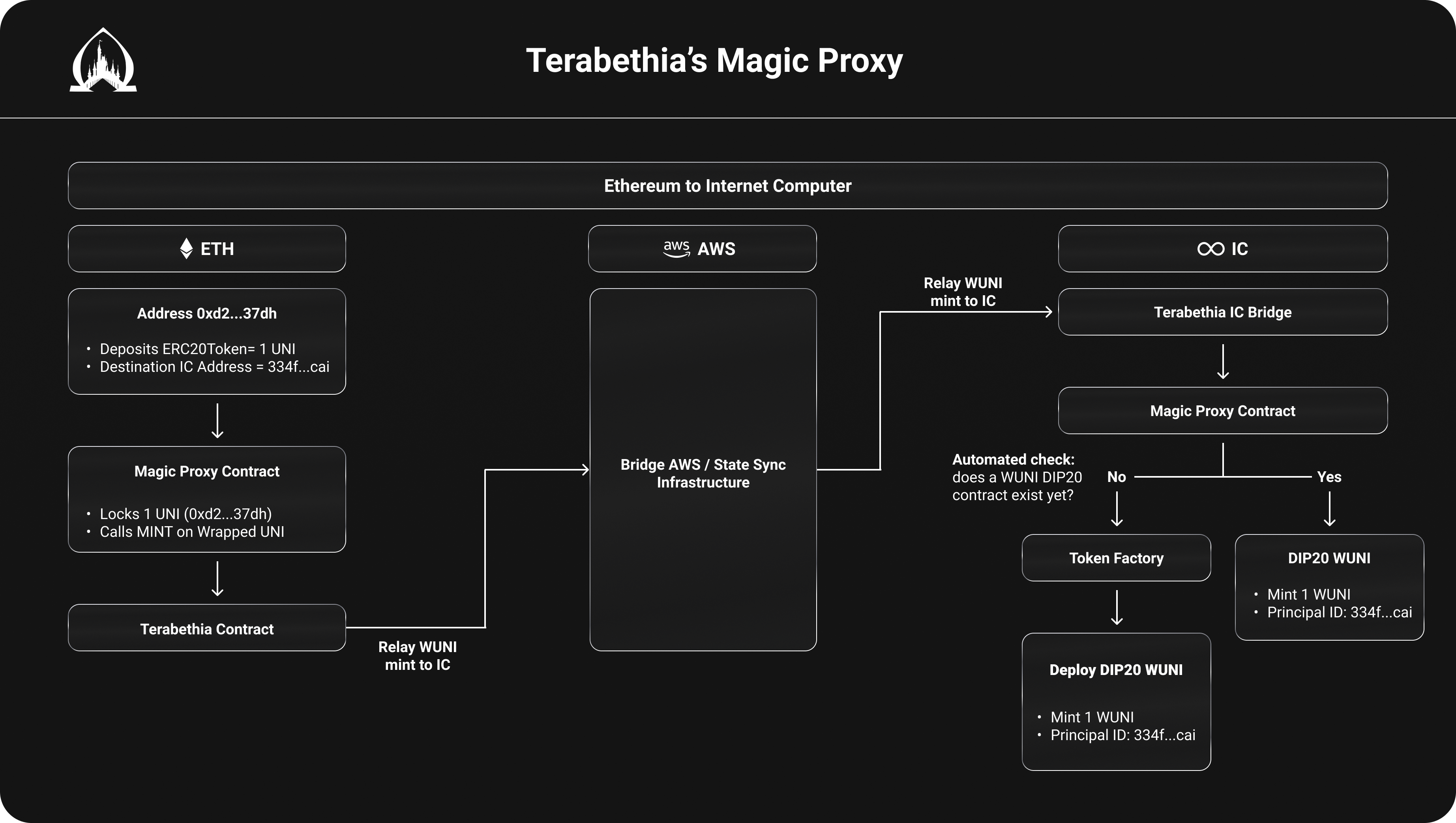Terabethia - A Bridge Between Ethereum & the Internet Computer
Terabethia is a bridge between Ethereum & the Internet Computer that contracts in both chains can use to message each other, and that Ethereum assets (ERC20, ERC721, & ERC1155) can use to be automatically mirrored & used on the IC through Terabethia's Magic Proxy & Token Factory, which will deploy wrapped versions of those assets programmatically with equivalent standards on the IC (DIP20, DIP721, DIP1155).
Important: This is an early look at Terabethia's repository, but it does not reference the final or upcoming test-net implementation. Don't consider the repository as a stable or complete release yet. We will further document, polish, and add-in key pieces to the Magic Proxy, the bridge, and more soon.
On this repository you can find early iterations of:
- eth: The Ethereum side of the Terabethia bridge and its contract.
- ic: The Internet Computer side of the Terabethia bridge and its contract.
- serverless: The base serverless AWS service utilized by the bridge.
Terabethia's Bridge Protocol Architecture
As seen in the graphic above, Terabethia's architecture is composed of the following pieces:
- Terabethia (Ethereum): One end of the bridge, the protocol's contract on Ethereum.
- Terabethia (IC): The other end of the bridge. The protocol's contract on the IC.
- State Sync Infrastructure: An AWS/lambda (for now) infra to send messages Ethereum<->IC.*
- The Magic Proxies: Contracts for the Ethereum asset mirroring protocol. Token Factory: Service in charge of deploying mirrored token contracts on the IC.
The State Sync Infrastructure will be removed from AWS once the native IC/Ethereum integration goes live (at which point this piece can be built in a canister on the IC). However starting with this piece being centralized is common practice for many bridges.
Terabethia's Magic Proxy Flow
One of the magic pieces is that it includes a built-in wrapped token factory on the Internet Computer that's in charge of deploying the mirrored ERC20 contracts to the IC using equivalent standards we've developed: DIP20, DIP, 721, & DIP1155 (coming soon).
There are two magic proxy contracts, one on Ethereum and another on the Internet Computer that can communicate with each other through Terabethia.
They will automatically allow anyone to send ERC20 tokens (and soon ERC721 & ERC1155) to the IC and benefit from its L2-like benefits (low fees, fast transactions, etc.) and other unique features (enhanced compute/storage capabilities, hosting/serving front ends directly from smart contracts, native IC/ETH integration, etc.) without needing to modify or rewrite any contracts or code.


